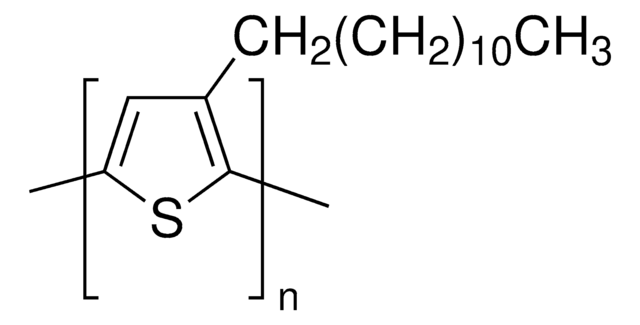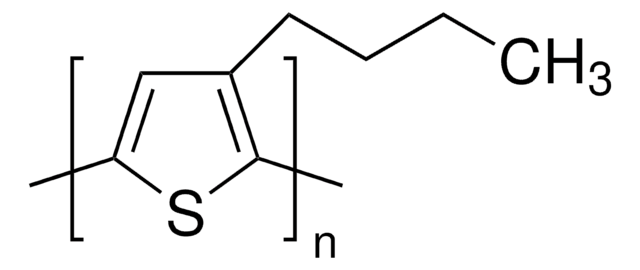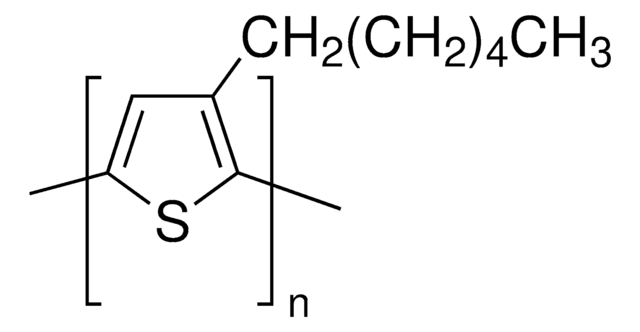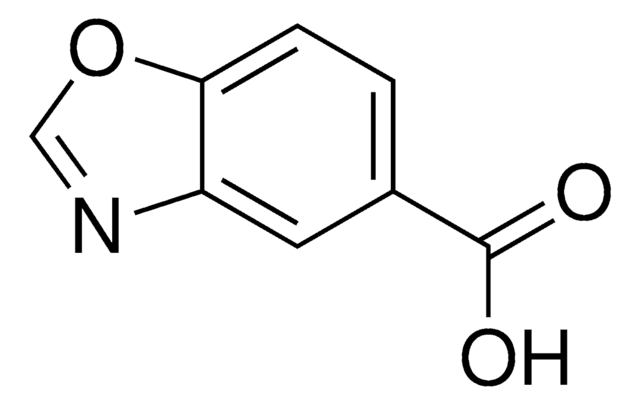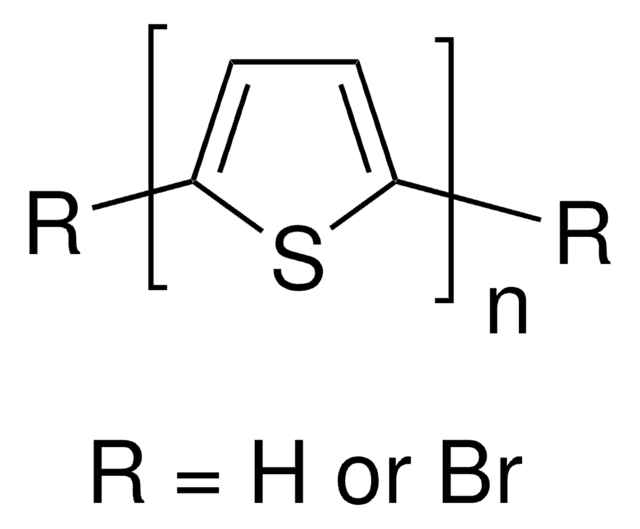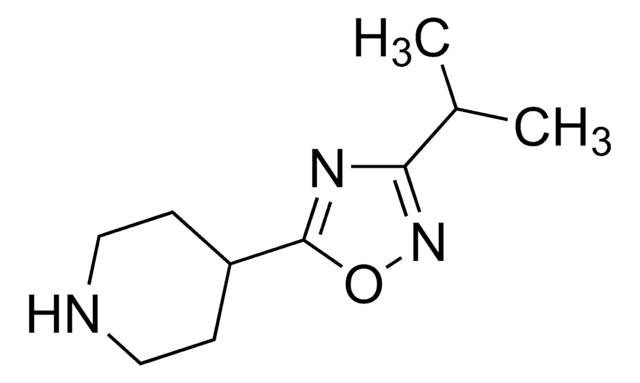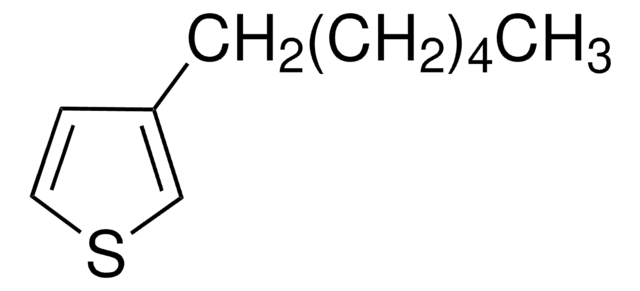495344
Poly(3-decylthiophene-2,5-diyl)
regioregular, average Mw ~42,000, average Mn ~30,000
Synonym(s):
P3DT, P3DT-RR
About This Item
Recommended Products
Quality Level
mol wt
average Mn ~30,000
average Mw ~42,000
color
black
fluorescence
λex 441 nm; λem 567 nm in chloroform
Looking for similar products? Visit Product Comparison Guide
Related Categories
General description
Application
Packaging
Legal Information
Rieke is a registered trademark of Rieke Metals, Inc.
wgk_germany
WGK 3
flash_point_f
Not applicable
flash_point_c
Not applicable
ppe
Eyeshields, Gloves, type N95 (US)
Certificates of Analysis (COA)
Search for Certificates of Analysis (COA) by entering the products Lot/Batch Number. Lot and Batch Numbers can be found on a product’s label following the words ‘Lot’ or ‘Batch’.
Already Own This Product?
Find documentation for the products that you have recently purchased in the Document Library.
Customers Also Viewed
Articles
The application of conducting polymers at the interface with biology is an exciting new trend in organic electronics research.
Novel Graphene‑Based Nanostructures Production, Functionalization, and Engineering
Intrinsically stretchable active layers for organic field-effect transistors (OFET) are discussed. Polymer structural modification & post-polymerization modifications are 2 methods to achieve this.
Our team of scientists has experience in all areas of research including Life Science, Material Science, Chemical Synthesis, Chromatography, Analytical and many others.
Contact Technical Service